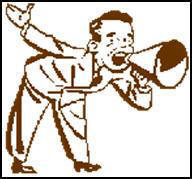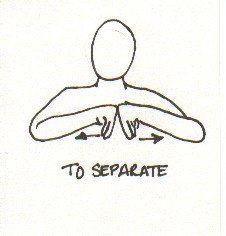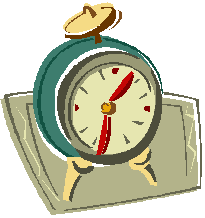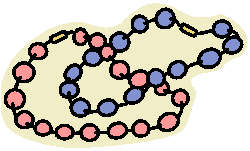- Commas
- Dr. H's 4 Rules
- Semicolons
- Colons
- Hyphens/Dashes
- Ellipses
- Quotation Marks
- Quotation Marks vs. Underlining
- Italics
- Brackets
________________
________________
|
1) Use commas after the parts of a
complete address in a sentence. The house number and
street form one part, as do the state and ZIP code number. Of course,
put commas between the city and the state, and put no commas between the
state and the ZIP code. (put commas at the end of each line on an
envelope).
Ex. The store manager asked her new assistant to send the hefty package to Dr. Alicia Raycroft, 4717 Bradford Street, Revere, Massachusetts 02151, today.
|
|
2) Use commas after the various parts
of a complete date. The month and the day form a
single part.
Ex. On June 2, 1973, I went to California. Ex. On Thursday, April 5, 1956, we had a blizzard.
|
|
3) Use a comma after the
salutation and the complimentary close of a friendly letter and
after the closing of a business letter. (salutations in business
letters are followed by colons instead of commas—To Whom It May
Concern:)
Ex. Dear Susan, Yours affectionately, Very truly yours,
|
|
4) Use a comma to set off a noun in direct address (someone you are directly addressing).
Ex. James, Mother wants you. (speaking to James) Ex. Turn off the lights, Jill. (to Jill)
|
|
5) Use a comma to set off an appositive unless it is closely tied to the word it explains.
Ex. Dawn, my pony, is in the barn. (interchangeable; pause; not necessary) (*not necessary=commas)
|
|
6) Use a comma to set off the exact words of a speaker from the rest of the sentence—unless the sense of the sentence requires some other mark (?!). Notice that end quotation marks come after the comma, not before (most punctuation comes within the “”).
Ex. “Why, yes,” Ellen answered, “I can help you now.” Ex. “What time is it?” she asked.
|
|
7) Use commas to separate each
item in a series of (3+) words, phrases, or short clauses. Do not
forget the comma before the “and.”
Ex. From Helen’s book dropped a pencil, a pen, and a stick of chewing gum. Ex. We looked in the barn, in the cowshed, and in the corncrib. Ex. Gladys has gone to town, Mary is asleep, and Nancy is jogging. (an exception to the RUN-ON RULE regarding no more than 2 independent clauses per sentence)
|
|
8) Use a comma before the coordinating
conjunction that connects two independent clauses in a compound
sentence. (“FAN BOYS”)
Ex. Bill should arrive today, but Alan will not be with him.
|
|
9) Use a comma to set off
parenthetical elements; that is, words inserted between main
sentence parts but not necessary to the meaning (and can thus be
excised).
Ex. This story, by the way, is true. You will, of course, agree.
|
|
10) Use a comma after
yes, no, oh, of course, well, and other such introductory
expressions.
Ex. Yes, there is a test on this material. Of course, you must study.
|
|
11) Use a comma after an
introductory dependent clause.
Ex. If you want to see that concert, order your tickets as soon as possible.
|
|
12) Use a comma after an introductory modifying phrase containing a participle (-ing, -ed), a gerund (-ing as noun), or an infinitive (to + verb).
Ex. Feeling warm, I drank a glass of lemonade. Ex. Bored with the lecture, Jackie fell asleep and missed vital information that was on the test.
|
|
13) Use a comma between co-ordinate adjectives before a noun
(2 adjectives
modifying the same noun AND “and” sounds right when placed between
them).
Ex. This has been a clear, sunny day. (clear and sunny) Ex. Aunt Mary screamed, “Isn’t she such a cute little girl!” (not cute and little girl) (she's not cute AND vertically challenged.)
|
|
14) Use a comma to set off words that
are added to change statements into questions or exclamatory
sentences.
Ex. We are going to the game, aren’t we? Ex. We showed them, didn’t we! (exceptions to the COMMA SPLICE RULE regarding 2 independent clauses and a comma--here, separating statement from question and exclamation)
|












